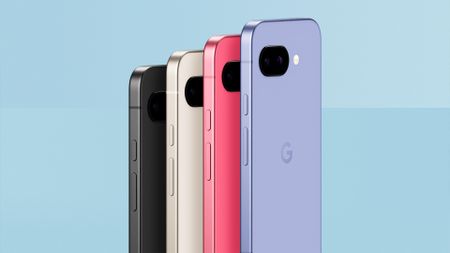
Spotted an IP rating on your phone's spec sheet and wondering what it means?
IP rating stands for Ingress Protection. It's all to do with the water- and dust-resistance level of a given device.
You'll find IP followed by two numbers: the first is the degree of dust resistance; the second the degree of water resistance.
The higher the number's value, the greater the resistance. If there's an 'X' instead of a number that means no resistance to that particular.
Best phone IP rating: maximum numbers
The degree of dust resistance and water resistance isn't on the same scale, though.
Maximum protection from dust is rated at 6. This means it's dust tight.
Maximum resistance to water is rated at 8. This means it's rated against full submersion at 3 metres 'for long periods'.
Sign up to the T3 newsletter for smarter living straight to your inbox
Get all the latest news, reviews, deals and buying guides on gorgeous tech, home and active products from the T3 experts
Therefore IP68 is the most protected a device can be against both dust and water using this IP rating scale.
IP ratings: What the numbers mean
For object/dust protection:
5 = dust protected, limited ingress permitted that will not interfere with device functionality
4 = protected against 1mm objects (i.e. not dust - so even sand could be a problem)
For water resistance:
7 = protected against water submersion of 1 metre for 30 minutes
6 = protected against powerful jets of water from any direction
5 = protected against jets of water from any direction
4 = protected against splashes
If there's no IP rating is there no protection?
Not necessarily. Motorola, as one example, has long coated its phone's interiors with a resistant coating, but didn't submit to the IP ratings system until more recently.
Also don't rely on your IP rating as thinking your device is invincible. Having an IP68 rated device is great reassurance, but not a guarantee that nothing can ever go wrong.

Mike is T3's Tech Editor. He's been writing about consumer technology for 15 years and his beat covers phones – of which he's seen hundreds of handsets over the years – laptops, gaming, TV & audio, and more. There's little consumer tech he's not had a hand at trying, and with extensive commissioning and editing experience, he knows the industry inside out. As the former Reviews Editor at Pocket-lint for 10 years where he furthered his knowledge and expertise, whilst writing about literally thousands of products, he's also provided work for publications such as Wired, The Guardian, Metro, and more.
-
 T3 Luxury Month 2025: the greatest luxurious gadgets you need for your home
T3 Luxury Month 2025: the greatest luxurious gadgets you need for your homeFrom watches to cars, T3 is rounding up the best of the best for Luxury Month
By Bethan Girdler-Maslen Published
-
 This Switch 2 news will change how I use my console completely, and I can't wait
This Switch 2 news will change how I use my console completely, and I can't waitSharing digital games is changing
By Max Freeman-Mills Published
-
 I tried a cutting-edge Asus gaming tablet, but it's left me conflicted
I tried a cutting-edge Asus gaming tablet, but it's left me conflictedThe Asus ROG Flow Z13 (2025) is impressive, but also weird
By Max Freeman-Mills Published
-
 Google's Pixel 9a does one simple thing that could tempt me away from iPhones after a decade
Google's Pixel 9a does one simple thing that could tempt me away from iPhones after a decadeGoogle's played a blinder here
By Max Freeman-Mills Published
-
 Google's new phone makes one huge, unexpected change
Google's new phone makes one huge, unexpected changeThe Pixel 9a is flat – that's big!
By Max Freeman-Mills Published
-
 I saw an AI feature that I'd actually use – and it's not what you might think
I saw an AI feature that I'd actually use – and it's not what you might thinkAI to help you detect other AI is a neat idea
By Max Freeman-Mills Published
-
 Honor suddenly adds Samsung-rivalling upgrade that'll last for years
Honor suddenly adds Samsung-rivalling upgrade that'll last for yearsIt's a big change, and a welcome one
By Max Freeman-Mills Published
-
 5 must-know iPhone 16e facts and how it compares to iPhone 16
5 must-know iPhone 16e facts and how it compares to iPhone 16Apple's newest iPhone is an interesting addition
By Max Freeman-Mills Published
-
 Amazon Kindle Scribe (2024) review: don't write it off
Amazon Kindle Scribe (2024) review: don't write it offThe Scribe is a well-made curio once again
By Max Freeman-Mills Published
-
 The best new camera phone might not be from Samsung or Apple
The best new camera phone might not be from Samsung or AppleOppo's making a big push for its next phone
By Max Freeman-Mills Published
